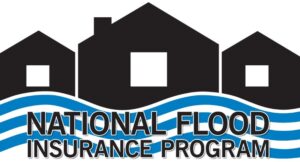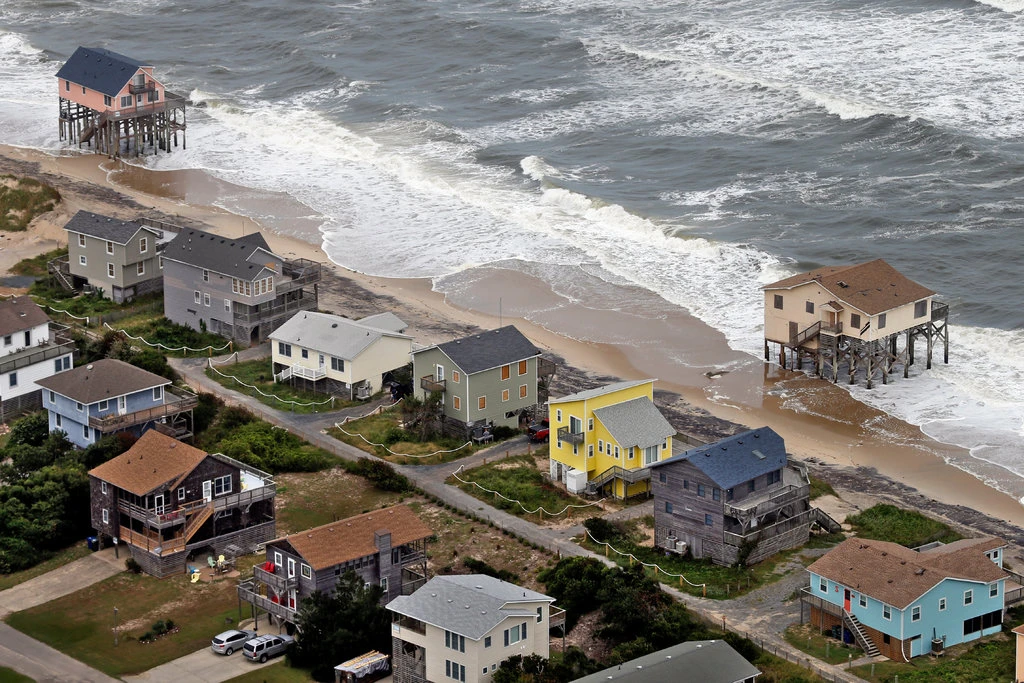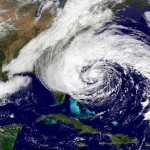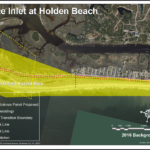Lou’s Views
News & Views / February Edition
Calendar of Events –

Southport Spring Festival
March 29th & 30th
Southport
Welcome Spring Easter weekend in style at the Southport Spring Festival, a tradition that started in 1996. This festival features a wide variety of activities.
For more information » click here

N.C. Azalea Festival
April 3rd thru 7th
Wilmington
Wilmington has been celebrating Spring Southern Style since 1948. There’s something for everyone among their community’s rich array of artwork, gardens, history, and culture. This festival is considered one of the top events in the Southeast.
For more information » click here

Strawberry & Wine Fest
April 28th
Sunset Beach
.
The Strawberry and Wine Festival, hosted by the Old Bridge Preservation Society since 2014. There will be wines available from Silver Coast Winery with strawberries as the main fare of the day. It’s a day of wine, food, entertainment, and craft vendors.
For more information » click here

Days at the Docks Festival
April 27th & 28th
Holden Beach
The annual festival which started in the 1980’s occurs in April or May and is sponsored by the Greater Holden Beach Merchants Association. It’s the Holden Beach way to kick-off the Spring and start the vacation season. In addition to the food and arts & crafts, enjoy live music & entertainment, a horseshoe tournament and the world famous “Bopple Race”. Lots of activities for the entire family!
For more information » click here
 Discover a wide range of things to do in the Brunswick Islands for an experience that goes beyond the beach.
Discover a wide range of things to do in the Brunswick Islands for an experience that goes beyond the beach.
For more information » click here.
Calendar of Events Island –

Shag Lessons
The Town of Holden Beach will offer shag lessons at the Holden Beach Chapel on Thursday evenings beginning February 29th and going through April 4th. Cost is $60 for residents for the series and $70 for non-residents. Beginners’ classes will run from 5:30 – 6:15 p.m. and intermediate from 6:15 – 7:00 p.m. You must have a dance partner in order to sign up. The instructor for the class will be Chuck Boney. Register by emailing Christy at [email protected] with your name, phone number and whether you are interested in the beginner or intermediate class.
 Pickleball Classes
Pickleball Classes
Pickleball classes will be held every Monday starting at 10:00 a.m. for beginners, 11:00 a.m. for intermediate and every Tuesday starting at 4:30 p.m. for ages 12-17, 5:30 p.m. for beginners, 6:30 p.m. for intermediate, and 7:30 p.m. for advanced, from March 18th through May 7th at Bridgeview Park. Cost is $100 for the season for residents and $110 for non-residents (or $180 for two classes per week for the season for both residents and nonresidents). For more information click here.

Easter Sunrise Service
Holden Beach Chapel and the Brunswick Islands Baptist Church and are sponsoring an Easter Sunrise Service at 6:30 a.m. Easter Sunday March 31st at the Holden Beach Pier.

Family Nighttime Easter Egg Hunt
The Town will hold its annual nighttime Easter Egg Hunt on Friday, April 5th beginning at 7:00 p.m. Teams of four will compete against each other. Participants will need to bring their own flashlights to the event and something to place their eggs in. Participants MUST register by March 18th and space is limited to the first 100 families. Email Christy at [email protected] to register.
Parks & Recreation / Programs & Events
For more information » click here
Reminders –

Solid Waste Pick-Up Schedule
GFL Environmental change in service, trash pickup will be once a week. This year September 30th was the the last Saturday trash pick-up until June. Trash collection will go back to Tuesdays only.
Please note:
. • Trash carts must be at the street by 6:00 a.m. on the pickup day
. • BAG the trash before putting it in the cart
. • Carts will be rolled back to the front of the house
GFL Refuse Collection Policy
GFL has recently notified all Brunswick County residents that they will no longer accept extra bags of refuse outside of the collection cart. This is not a new policy but is stricter enforcement of an existing policy. While in the past GFL drivers would at times make exceptions and take additional bags of refuse, the tremendous growth in housing within Brunswick County makes this practice cost prohibitive and causes drivers to fall behind schedule.
Solid Waste Pick-up Schedule – starting October once a week
Recycling – starting October every other week
Curbside Recycling – 2024
GFL Environmental is now offering curbside recycling for Town properties that desire to participate in the service. The service cost per cart is $106.88 annually paid in advance to the Town of Holden Beach. The service consists of a ninety-six (96) gallon cart that is emptied every other week during the months of October – May and weekly during the months of June – September.
Curbside Recycling Application » click here
Curbside Recycling Calendar » click here
Recycling renewal form was sent, you should have gotten e-mail letter already
 Yard Waste Service
Yard Waste Service
Yard debris pick-up will be provided twice a month on the second and fourth Fridays during the months of March, April, and May. Please have yard waste placed at the street for pick-up on Thursday night. The first pickup of the season is on March 8th. No pick-ups will be made on vacant lots or construction sites.
Debris must be placed in a biodegradable bag or bundled in a length not to exceed five (5) feet and fifty (50) pounds. Each residence is allowed a total of ten (10) items, which can include a combination of bundles of brush and limbs meeting the required length and weight and/ or biodegradable bags with grass clippings, leaves, etc.

Brunswick County Shred Event
Brunswick County will be hosting its spring free shred event at the Brunswick County Government Center on Saturday, March 23rd. Brunswick County residents and/or property owners can dispose of any unneeded documents free of charge. Proof of Brunswick County residency or property ownership is required.
Brunswick County Governmental Center
3325 Old Ocean Hwy., Bolivia, NC 28422
For more information » click here
Upon Further Review –
 Bike Lane
Bike Lane
Property owners along Ocean Boulevard were sent a CAMA notice from the DOT
.
Key takeaways:
- Add 7’ asphalt to the south side of existing pavement
- Add 3’ asphalt to the north side of existing pavement
- Recenter the travel lanes
- Create two (2) five (5) foot bike lanes on either side of the road
DOT informed us the cost of the has significantly increased by almost 30%
The good news is that our portion is only an additional $23,000 so far
Previously reported – October 2023
DOT Bike Lane Report Presentation » click here
The plan includes bike lanes of 5’ on each side of Ocean Boulevard. It will be an asymmetrical widening, that is 7’ on the south side and only 3’ on the north side where the sidewalk is.
Highland Paving has been awarded the contract and has already met with the town staff
Surveying has already been completed and work on storm water issues will begin in November
Paving prep work will start once that is completed, probably sometime in December
They anticipate that the actual paving project will be done beginning March
Work will be done starting from the west end of the island working east
They are still committing to completing the project before Memorial Day
THB Newsletter (10/20/23)
Ocean Boulevard Resurfacing and Bike Lane Project
Highland Paving met with the Department of Transportation and staff last week to discuss the upcoming project. They communicated that storm water work will begin in November. The subsequent paving prep work, which we are thinking will take place in December, will involve removal of the road shoulders, three feet on the north side of the road and seven feet on the south side of the road. We do not know where the contractor will be at any given point in time. Property owners are responsible for removing any material (landscape timbers/specialty rock, etc.) from the construction area that they don’t want hauled off by the contractor. Replacement material will be generic ABC stone. Mailboxes will be moved/reset, but if they fall apart, the contractor will install a generic replacement. We are forecasting the paving won’t begin until March/April, with the project being completed by Memorial Day.
THB Newsletter (12/21/23)
Ocean Boulevard Resurfacing and Bike Lane Project
Paving prep work for the project will involve removal of the road shoulders, three feet on the north side of the road and seven feet on the south side of the road. Work is scheduled to start in the beginning of January. Make sure to remove any materials before this time. Property owners are responsible for removing any material (landscape timbers/specialty rock, etc.) from the construction area that they don’t want hauled off by the contractor. Replacement material will be generic ABC stone. Mailboxes will be moved/reset, but if they fall apart, the contractor will install a generic replacement.
THB Newsletter (01/16/24)
DOT Resurfacing and Bike Lane Project
The contractor will start moving mailboxes and street signs this week. Mailboxes will be relocated to the far edge of the right-of-way. Mail service is not expected to be impacted. Subsequent work on clearing material from the right-of-way is scheduled to begin once this work has been completed.
 DNA study reveals statistics about Holden Beach 2023 sea turtle nesting season
DNA study reveals statistics about Holden Beach 2023 sea turtle nesting season
A DNA study of sea turtle nests in Holden Beach was recently completed, revealing interesting statistics about the 2023 season. According to a Holden Beach sea turtle program, 65 of 70 loggerhead nests were analyzed, indicating 29 unique females laid nests on their beach last year — an average of 2.4 nests per female. One turtle laid five nests within 1.3 miles of shoreline. The turtle with the most nests laid six. Volunteers say that specific turtle has been laying nests on Holden Beach since 2014.
Read more » click here
Corrections & Amplifications –

Holden Beach Causeway – Facebook
Sometimes change is out of our control but if we recognize it in time, we can help influence change to have a positive outcome. Our community is special and no longer a secret. The area’s population increase is happening at a rapid pace. The Holden Beach Causeway has become insufficient to meet today’s demand. Spend a little time on the Causeway and it is easy to see it is unsafe for pedestrians and vehicles entering and exiting the local businesses. The crash rating on the Causeway is three (3) times higher than the NC state average for similar roads. Since 2018 I have persistently advocated for a study on developing the necessary changes needed on the Holden Beach Causeway. The Holden Beach Causeway Corridor Study was approved and funded in 2019. The study was developed with the influence of the Causeway property owners working with Brunswick County Planning, the North Carolina Department of Transportation and the Grand Strand Area Transportation Study (GSATS). A special thank you to the Causeway Property Owners who were a part of the Causeway Study Steering Committee. Lyn Holden, Gina Robinson, Steven Parish, Joe Shannon, Andrew Robinson and I dedicated a lot of time working on the study. Communicating with other Causeway property owners and representing what is right for our community, to prevent an unwanted outcome. The steering committee involved Tri-Beach Fire Department in the conversations. Including their opinions on the study’s development to assure they had sufficient access through the Causeway and to the island for emergency response. All headed up by the carefully chosen consulting firm, Bolten and Menk. The consulting firm did an amazing job working with all of the obstacles on the Causeway, consulting with the steering committee and business owners about their concerns of any negative impacts from the project. We are proud to present to you the Holden Beach Causeway Corridor Study. Please visit the link below to review the final draft. Considering all of the obstacles and considerations for everyone, the outcome offers a bright future for our community. It also provides a path for sustainability and safety for our Causeway and its businesses, as our area continues to grow.
What happens next?
Chairman to the Brunswick County Board of Commissioners, Commissioner Randy Thompson, has requested an endorsement for the Holden Beach Causeway Project from the Town of Holden Beach. Commissioner Thompson’s position for requesting the Town endorsement is the Causeway is the highway ingress, egress to the island. Next, the study will be presented to the Brunswick County Board of Commissioners for endorsement. Once the study has been endorsed by Brunswick County, the study will go back to the Grand Strand Area Transportation Study for adoption. Once adopted by GSATS, we can begin applying for Funding. It has been a long road to get to this point and we have a long road ahead to receive funding and begin construction. Thank you all for your support for the Holden Beach Causeway Project. We will need your continuous support as we navigate through the next phase of this process. I will keep this page posted as developments are made with the County required endorsements and the road to GSATS adoption.
Jabin Norris president of PROACTIVE Real Estate
For more information » click here
HB Causeway Study Report » click here
THB Newsletter (01/25/24)
Holden Beach Causeway Study
The Grand Strand Area Transportation Study MPO (GSATS) funded a study to improve the Holden Beach Causeway by observing the area and addressing the concerns of Causeway business owners and patrons as well as the community related to vehicular and pedestrian safety, accessibility, right‐of‐way encroachments, and parking deficiencies. This study provides insight as to how the corridor functions and ideas for future improvements from a transportation and land use perspective.
For more information and to view the study, visit the Brunswick County Planning Department’s website: https://www.brunswickcountync.gov/409/Holden-Beach-Causeway-Transportation-Cor
The Draft Holden Beach Causeway Transportation Study will go to the Brunswick County Board of Commissioners for a public hearing and for their consideration on February 5, 2024, at 3:00 p.m.
THB Newsletter (02/01/24)
Holden Beach Causeway Study
The date the Draft Holden Beach Causeway Transportation Study will go to the Brunswick County Board of Commissioners for a public hearing and for their consideration has been changed to March 18th at 6:00 p.m.
For more information and to view the study, visit the Brunswick County Planning Department’s website: https://www.brunswickcountync.gov/409/Holden-Beach-Causeway-Transportation-Cor.
Holden Beach Causeway study approved for future planning
The Grand Strand Area Transportation Study (GSATS) transportation advisory committee (TAC) on Friday, Feb. 16, voted to add the Holden Beach Causeway Corridor Study into GSATS’ long-range planning. The action did not approve the implementation of any projects but the entire study will be in the GSATS Metropolitan Transportation Plan (MTP), making it eligible for federal funding if project recommendations are ever put to action. “It will never be a project unless the county comes forward and wants it to be a project,” GSATS Metropolitan Planning Organization (MPO) Director Mark Hoeweler said. Hoeweler said the Technical Coordinating Committee (TCC) recommended the TAC approve the study and add it to the GSATS MTP as an appendix. “We update that document every five years,” he added. “It has a 20-year horizon to it.” The Holden Beach Road Causeway stretches from the Sabbath Home Road-Holden Beach Road intersection to near the base of the Holden Beach Bridge. The causeway is owned by the North Carolina Department of Transportation (NCDOT) and is not within the Town of Holden Beach town limits. The GSATS 2040 MTP already contains plans to widen NC 130 from the intersection of Sabbath Home Road and Holden Beach Road to the end of state maintenance, near the bridge, and add a multipurpose path. Designer Grant Meacci with Bolton & Menk, Inc., who created the study, said the study addresses parking, pedestrian safety and accessibility, and encourages supporting existing businesses. Meacci’s presentation detailed adjacent property zoning, land uses and environmental conservation areas in the study area, noting the study incorporated the county’s Blueprint Brunswick 2040 Comprehensive Land Use Plan and Parks and Recreation Master Plan, along with other demographic and traffic data related to the Holden Beach causeway area too. “So, we take all those types of analysis and start to look at what is likely to change in the area — in the immediate area — in terms of development,” he explained. The study shows there’s not a lot of “room for change other than redevelopment over time,” Meacci noted, and that developmental factors are not expected to cause a large traffic increase on the causeway. The designer said most local roads are for residential use and that the vehicle traffic on the Holden Beach causeway fluctuates between 7,000 and 10,000 trips per day throughout the year. Regarding car crashes, he said nearly half of all the crashes along the causeway are related to drivers taking left turns. A steering committee was formed to identify assets and opportunities that are specific to the causeway. Representatives of the NCDOT, GSATS, corridor business owners and property owners, and the Brunswick County Planning Department were on the committee. Meacci said the committee had meetings, public workshops and community open houses. A community survey was also sent out, which garnered 1,490 responses. A majority of participants were residents, business owners and property owners, Meacci added. Most survey respondents were folks who reside in Holden Beach, Supply, Varnamtown, Shallotte and unincorporated Brunswick County. A large portion of survey respondents said they do not feel safe traveling the causeway as cyclists and pedestrians. Meacci said the causeway’s right-of-way width is not consistent, stating there are three different widths along the causeway as it becomes wider closer to the Holden Beach bridge. The study highlights how different road design options could impact local businesses, pedestrians, drivers, and beautification, he noted. The study proposed three different design options for the causeway, Meacci said, but eventually the options evolved into two alternate designs with one recommendation. In all options, a wide multi-use path with parallel parking and street trees on both causeway sides is included. The study’s parking analysis counted a total of 795 marked and unmarked parking spaces along the causeway. Of the 795 parking spaces, 449 are on private property and 252 are in the public right of way. Options for no on-street parking, diagonal on-street parking and parallel on-street parking were given in the presentation, however, Meacci said diagonal on-street parking would allow for more parking spaces. The two alternative designs included a design that had a mix of parallel parking and diagonal parking along the causeway and a different design with no parking, with the preferred recommended alternative design being the mixed parking option. Meacci noted mixed parking installation would increase parking along the right of way from 252 to 324 spaces and increase private property parking from 449 to 584 spaces. The recommendation also includes parking for oversized vehicles. “There was a recommendation to reduce the speed limit from 45 [miles per hour] to 30 [miles per hour],” Meacci said. He said the development of an Overlay District to direct future redevelopment and improvements has also been recommended. The district would ensure buildings are “appropriately placed” along the corridor and promote land use standards and mixed use areas. The study recommendation encourages people to park once and walk from business to business, Meacci said. It includes adding crosswalks, street lights and other beautification elements along the causeway, too. Hoeweler explained that the TAC’s approval of the study sets the plan up for future implementation and makes the study eligible for federal and grant funding. “So, therefore, if anybody in the future wants to do one of those intersection projects and wants to add something, we’ve got a template to work off of,” he said, noting approval of the study is not approval of the projects within the study. If all the projects within the study come to fruition, the entire project cost estimate is $8,143,000. The cost includes ADA-compliant concrete curb ramps for paths at driveways and crossroads, crosswalks with accessible pedestrian signal push buttons at the traffic signal at Sabbath Home Road and Holden Beach Road and 60 benches. Hoeweler said GSATS could help fund parts of the project, like a bike path or sidewalks, but not the entire project. Asked if the town of Holden Beach had been included in development of the study, Holden Beach Mayor Alan Holden and Town Manager David Hewett both said the town was not invited to participate. Mayor Holden told The Brunswick Beacon he owns property along the corridor and had no comment on the study. A draft of the study and cost estimates can be found on Brunswick County’s website at https://www.brunswickcountync.gov/409/Holden-Beach-Causeway-Transportation-Cor.
Read more » click here
Odds & Ends –

Alerts
Brunswick County uses ReadyBrunswick as part of the County’s effort to continuously improve communications during emergency situations within our area. Powered by Everbridge, the ReadyBrunswick notification system sends emergency notifications in a variety of communication methods such as:
- Landline (Voice)
- VoIP (Voice over Internet Protocol)
- Mobile (Voice)
- Mobile SMS (Text Messaging)
In the case of an emergency, you may choose to receive notifications via one or all of these communication methods. It’s recommended that you register several media options to receive messages in the event a particular communication device is unavailable.
For more information » click here
Brunswick County Emergency Communications Notification System
Get notified about emergencies and other important community news by signing up for our ReadyBrunswick Emergency Notification System. This system enables us to provide you with critical information quickly in a variety of situations, such as severe weather, unexpected road closures, missing persons, evacuations of buildings or neighborhoods, and more. You will receive time-sensitive messages wherever you specify, such as your home, mobile or business phones, email address, text messages and more. You pick where, you pick how.
SIGN UP HERE to choose the type of alerts you want to receive.
Accommodation/Occupancy Tax Compliance
Editor’s note –
Accommodation/Occupancy Tax Compliance should go to the top of the queue because it provides an additional revenue stream. The software will allow the town to identify properties currently being used for short-term rentals. The more properties that properly comply, the more accommodations tax revenue the town will receive.
City enters into contract to monitor short-term rentals
The City of Southport hopes to have found a short-term answer that will lead to a long-term solution for its short-term vacation rental issues. The board of aldermen has authorized a one-year contract with the software company Granicus for three modules to help the city identify short-term vacation rentals within its limits. The action came by a 4-2 vote Friday at Indian Trail Meeting Hall. The cost is $9,840. “We think the best path moving forward, as the board sees fit, is to contract with Granicus for one year to see how much it benefits us,” said Assistant City Manager/City Clerk Dorothy Dutton. “It’s going to be the best source, in our mind, to capture all the existing short-term vacation rentals and monitor them for a year.”
No updated list
The city has struggled in the past to enforce its short-term vacation rental ordinance. Things became complicated when the state made annual registration requirements for short-term vacation home permits illegal. As a result, Southport removed the registration requirement from its books. The city does not have an updated annual registration list to refer to in order to identify properties being used for short-term rentals. Monitoring social media, direct observation and relying on complaints from neighbors were possible ways to try to tackle the problem, but the city may have found a better option with the use of software. Southport had about 180 short-term rentals in July 2023, said Dutton, and it derives about $250,000 in annual revenue from its occupancy tax. “I’m looking forward to the enforcement piece of this with the software because whenever you’re just relying on complaint-based (reporting), you have inconsistent enforcement,” said Alderman Karen Mosteller.
Kelley: educate owners
Aldermen Rebecca Kelley and Marc Spencer voted against the measure. Kelley said the city receives lump-sum occupancy tax payments from online booking companies Vrbo and Airbnb, but the companies don’t identify the property owners. “Is it also possible that by identifying those that are in violation right now, we could potentially lose up to $150,000 in our current revenue because as it comes in (from) Vrbo and Airbnb, those are not flagged to us as to who they are?” she asked. “So, we could potentially spend $10,000 to lose $100,000 here, guys.” Kelley liked the idea of educating current short-term rental owners and realtors about the city’s regulations. “By sharing with them what our goals are for Southport, we could potentially do this without spending the $10,000,” she said. “Now will some still sneak through? Sure. There’s no way to catch all of them by doing that, but we have the potential to not spend that much money and still catch a lot of people that are doing this and be able to move through it a different way. Rather than spending money to lose money, let’s see if we can do it by working with the people who are doing it correctly first.”
Carroll responds
Alderman Robert Carroll wasn’t convinced by that approach, saying, “My perspective on that is illegal is illegal, and I don’t care how much money we’re getting from those illegals.” He did agree that education on the matter is needed. Some people, he said, misunderstood when the city did away with the registration requirement, thinking that allowed short-term vacation rentals. “I go into situations where people are saying, ‘Oh no, short-term (rentals), you can do them again,’” Carroll said. “All we did was remove the requirement to register and pay. That’s all we did. We did not say you can go do them again. “We need to educate people that that’s the case.” Moreover, Carroll said relying on realtors to spread the word about the city’s occupancy statute “is way far-fetched. If that realtor wants to be a professional and learn these things and talk from an educated perspective, that’s their business.” After the vote was taken, Spencer said, “I think that the Airbnb law is an illegal taking of property rights and we have created a line in the sand that we are now having to enforce. I don’t necessarily like Airbnb.” “I suspect that we’ve got people that are not going through Airbnb or whatever, doing it word of mouth, whatever,” Alderman Frank Lai said. “So, we don’t know who they are. We’re losing a lot of money that way.” Carroll sounded hopeful that once people are properly informed, “We will ultimately see herd compliance. We will start to see people do what they’re supposed to do.”
Read more » click here
Previously reported – November 2023
How this Brunswick beach town is cracking down on short-term rental properties
Officials in one Brunswick County beach town are looking to keep a closer eye on short-term rental properties. After discovering many short-term rentals in Sunset Beach were underreporting or not reporting proper accommodations tax to the town, town officials have signed a $45,000 yearlong contract with GovOS to help better monitor such properties in the town. GovOS is a software platform that works with state and local governments to streamline various processes involving property, licensing and taxing. GovOS promised its short-term rental software would help increase short-term compliance in the town. According to Sunset Beach staff, research on this subject in the town began over two years ago. GovOS estimated the town has 637 short-term rental properties. Of those, the company estimated some 200 are fully in compliance with the town’s accommodation tax ordinance. Accommodations tax is a tax on short-term rental properties – properties that are rented through platforms such as AirBnB or VRBO. In Sunset Beach, accommodations taxes are levied at a rate of 6% of the gross rental income, which includes a 3% tourism-related expenditure tax, a 2% beach nourishment and protection tax, and a 1% county tourism and travel tax. According to Sunset Beach, the property owner or agent are required to pay the full 6% tax to the town with a tax report form monthly based on income from the previous month. Even if no rental receipts are applicable for that month, property owners or agents must file reports month. The software will allow the town to identify properties currently being used for short-term rentals – a feat town staff has struggled with in the wake of the explosion of short-term rental platforms such as AirBnB and VRBO. Once the properties are identified, the software will report the short-term rental properties to the town along with a variety of information on the properties and their tax reporting history. The more properties that properly comply, the more accommodations tax revenue the town will receive. According to the town’s budget for the 2023-24 fiscal year, the town anticipates collecting some $775,000 in accommodations taxes, a figure that could be nearly doubled if this software is successful. The Sunset Beach Town Council heard a presentation from GovOS in September before awarding the contract in October, at the request of town staff.
Read more » click here
This and That –

NC State Native Plant Resources » click here
NC Sea Grant Coastal Landscapes » click here
New Hanover County Arboretum Native Plant Garden » click here
Audubon Native Plant Database » click here
Fauna & Flora » click here
Holden Beach recommended plant list – deer resistant & salt tolerant
Factoid That May Interest Only Me –

Island Homes Sold – 2023 * Lou’s Views (lousviews.com)
A complete list of homes sold in 2023
Island Land Sold – 2023 * Lou’s Views (lousviews.com)
A complete list of land sold in 2023
Island Properties Sold – Comparison * Lou’s Views (lousviews.com)
A comparison of Holden Beach properties sold through the last three (3) years
County real estate market closes out 2023 with strong, consistent numbers
Brunswick County’s residential real estate market closed out 2023 with numbers very similar to last year’s performance. The number of new listings increased, while the average sales price, the number of homes sold, and total sales volume all saw slight decreases compared to 2022. “2023’s numbers were very similar to 2022, and our market seems to be cruising along steady and smooth,” said Cynthia Walsh BCAR CEO. “Thanks to continued strong demand, average sales prices increased throughout the year; however, total sales volume is slightly down compared to last year, but it’s hard to complain about $2 billion in sales. Overall, our market is positioned for a strong 2024.” Total sales volume decreased from $2,530,790,000 in 2022 to $2,486,990,000 in 2023. Average sales prices for the year were down 2.8% compared to 2022, from $453,440 to $440,865. New listings increased 5.6%, from 6,068 to 6,407, and the number of units sold dropped 5%, from 5,572 to 5,295. When it comes to December’s numbers, they tracked as expected with fewer homes sold, and a slight increase in new listings and average sales prices. Total sales volume decreased 5.9% compared to December 2022, from $180,100,000 to $169,400,000, while average sales prices were up 4.1%, from $445,799 to $464,117. Luxury homes may have been the holiday gift of the season, with 22 transactions in excess of $1 million, four in excess of $2 million and one in excess of $3 million. New listings were up 6.2% in December, from 325 to 345, and the number of units sold dropped 9.7%, from 404 to 365. Homes spent an average of 50 days on the market in December. The absorption rate, which is the amount of time it would take to sell all available inventory, remains around three months.
Brunswick County
New Listings
December 2023: 345
December 2022: 325
Increase/Decrease: +6.2%
Units Sold
December 2023: 365
December 2022: 404
Increase/Decrease: -9.7%
Average Sales Price
December 2023: $464,117
December 2022: $445,799
Increase/Decrease: +4.1%
Median Sales Price
December 2023: $353,500
December 2022: $359,900
Increase/Decrease: -1.8%
Total Sales Volume
December 2023: $169,400,000
December 2022: $180,100,000
Increase/Decrease: -5.9%
The Brunswick County Association of Realtors (BCAR) is the local association level of the largest trade association in the nation, presently serving its members, which are comprised of realtors, appraisers and affiliate members. Chartered in 1959 by the National Association of Realtors (NAR), BCAR represents the interests of its members in southeastern North Carolina and northeastern South Carolina. For more information, visit https://bcarnc.com/.
Read more » click here
Hot Button Issues –
Subjects that are important to people and about which they have strong opinions

Climate
For more information » click here
.
There’s something happening here
What it is ain’t exactly clear
It’s official: 2023 was Earth’s warmest year in a century and a half, with temperatures breaking records month after month.
The numbers are in, and scientists can now confirm what month after month of extraordinary heat worldwide began signaling long ago. Last year was Earth’s warmest by far in a century and a half. Global temperatures started blowing past records midyear and didn’t stop. First, June was the planet’s warmest June on record. Then, July was the warmest July. And so on, all the way through December. Averaged across last year, temperatures worldwide were 1.48 degrees Celsius, or 2.66 Fahrenheit, higher than they were in the second half of the 19th century, the European Union climate monitor announced on Tuesday. That is warmer by a sizable margin than 2016, the previous hottest year. To climate scientists, it comes as no surprise that unabated emissions of greenhouse gases caused global warming to reach new highs. What researchers are still trying to understand is whether 2023 foretells many more years in which heat records are not merely broken but smashed. In other words, they are asking whether the numbers are a sign that the planet’s warming is accelerating. “The extremes we have observed over the last few months provide a dramatic testimony of how far we now are from the climate in which our civilization developed,” Carlo Buontempo, the director of the E.U.’s Copernicus Climate Change Service, said in a statement. Every tenth of a degree of global warming represents extra thermodynamic fuel that intensifies heat waves and storms, adds to rising seas and hastens the melting of glaciers and ice sheets. Those effects were on display last year. Hot weather baked Iran and China, Greece and Spain, Texas and the American South. Canada had its most destructive wildfire season on record by far, with more than 45 million acres burned. Less sea ice formed around the coasts of Antarctica, in both summer and winter, than ever measured. NASA, the National Oceanic and Atmospheric Administration and the research group Berkeley Earth are scheduled to release their own estimates of 2023 temperatures later this week. Each organization’s data sources, and analytical methods are somewhat different, though their results rarely diverge by much. Under the 2015 Paris Agreement, nations agreed to limit long-term global warming to 2 degrees Celsius, and, if possible, 1.5 degrees. At present rates of greenhouse gas emissions, it will only be a few years before the 1.5-degree goal is a lost cause, researchers say. Carbon dioxide and other greenhouse gases are the main driver of global warming. But last year several other natural and human-linked factors also helped boost temperatures. The 2022 eruption of an underwater volcano off the Pacific island nation of Tonga spewed vast amounts of water vapor into the atmosphere, helping trap more heat near Earth’s surface. Recent limits on sulfur pollution from ships brought down levels of aerosols, or tiny airborne particles that reflect solar radiation and help cool the planet. Another factor was El Niño, the recurrent shift in tropical Pacific weather patterns that began last year and is often linked with record-setting heat worldwide. And that contains a warning of potentially worse to come this year. The reason: In recent decades, very warm years have typically been ones that started in an El Niño state. But last year, the El Niño didn’t start until midyear — which suggests that El Niño wasn’t the main driver of the abnormal warmth at that point, said Emily J. Becker, a climate scientist at the University of Miami. It is also a strong sign that this year could be hotter than last. “It’s very, very likely to be top three, if not the record,” Dr. Becker said, referring to 2024. Scientists caution that a single year, even one as exceptional as 2023, can tell us only so much about how the planet’s long-term warming might be changing. But other signs suggest the world is heating up more quickly than before. About 90 percent of the energy trapped by greenhouse gases accumulates in the oceans, and scientists have found that the oceans’ uptake of heat has accelerated significantly since the 1990s. “If you look at that curve, it’s clearly not linear,” said Sarah Purkey, an oceanographer with the Scripps Institution of Oceanography at the University of California, San Diego. A group of researchers in France recently found that the Earth’s total heating — across oceans, land, air and ice — had been speeding up for even longer, since 1960. This broadly matches up with increases in carbon emissions and reductions in aerosols over the past few decades. But scientists will need to continue studying the data to understand whether other factors might be at work, too, said one of the researchers, Karina von Schuckmann, an oceanographer at Mercator Ocean International in Toulouse, France. “Something unusual is happening that we don’t understand,” Dr. von Schuckmann said.
Read more » click here
Scientists knew 2023’s heat would be historic — but not by this much
The year 2023 was the hottest in recorded human history, Europe’s top climate agency announced Tuesday, with blistering surface temperatures and torrid ocean conditions pushing the planet dangerously close to a long-feared warming threshold. According to new data from the Copernicus Climate Change Service, Earth’s average temperature last year was 1.48 degrees Celsius (2.66 degrees Fahrenheit) hotter than the preindustrial average, before humans began to warm the planet through fossil fuel burning and other polluting activities. Last year shattered the previous global temperature record by almost two-tenths of a degree — the largest jump scientists have ever observed. This year is predicted to be even hotter. By the end of January or February, the agency warned, the planet’s 12-month average temperature is likely to exceed 1.5 degrees Celsius (2.7 degrees Fahrenheit) above the preindustrial level — blasting past the world’s most ambitious climate goal. The announcement of a new temperature record comes as little surprise to scientists who have witnessed the past 12 months of raging wildfires, deadly ocean heat waves, cataclysmic flooding and a worrisome Antarctic thaw. A scorching summer and “gobsmacking” autumn temperature anomalies had all but guaranteed that 2023 would be a year for the history books. But the amount by which the previous record was broken shocked even climate experts. “I don’t think anybody was expecting anomalies as large as we have seen,” Copernicus director Carlo Buontempo said. “It was on the edge of what was plausible.” The staggering new statistics underscore how human-caused climate change has allowed regular planetary fluctuations to push temperatures into uncharted territory. Each of the past eight years was already among the eight warmest ever observed. Then, a complex and still somewhat mysterious host of climatic influences combined with human activities to push 2023 even hotter — ushering in an age of “global boiling,” in the words of United Nations Secretary General António Guterres. Unless nations transform their economies and rapidly transition away from polluting fuels, experts warn, this level of warming will unravel ecological webs and cause human-built systems to collapse.
A year that ‘doesn’t have an equivalent’
When ominous warmth first appeared in Earth’s oceans last spring, scientists said it was a likely sign that record global heat was imminent — but not until 2024. But as the planet transitioned into an El Niño climate pattern — characterized by warm Pacific Ocean waters — temperatures took a steeper jump. July and August were the two warmest months in the 173-year record Copernicus examined. As Antarctic sea ice dwindled and the planet’s hottest places flirted with conditions too extreme for people to survive, scientists speculated that 2023 would not only be the warmest on record — it might well exceed anything seen in the last 100,000 years. Analyses of fossils, ice cores and ocean sediments suggest that global temperatures haven’t been this high since before the last ice age, when Homo sapiens had just begun to migrate out of Africa and hippos roamed in what is now Germany. Autumn brought even greater departures from the norm. Temperatures in September were almost a full degree Celsius hotter than the average over the past 30 years, making it the most unusually warm month in Copernicus’s data set. And two days in November were, for the first time ever, more than 2 degrees Celsius (3.6 degrees Fahrenheit) hotter than the preindustrial average for those dates. “What we have seen in 2023 doesn’t have an equivalent,” Buontempo said. The record-setting conditions in 2023 were driven in part by unprecedented warmth in the oceans’ surface waters, Copernicus said. The agency measured marine heat waves from the Indian Ocean to the Gulf of Mexico. Parts of the Atlantic Ocean experienced temperatures 4 to 5 degrees Celsius (7.2 to 9 degrees Fahrenheit) above average — a level that the National Oceanic and Atmospheric Administration classifies as “beyond extreme.” While researchers have not yet determined the impacts on sea life, similar heat waves have caused massive harms to microorganisms at the base of the food web, bleached corals and fueled toxic algae blooms, she added. Though the oceans cover about two-thirds of Earth’s surface, scientists estimate they have absorbed about 90 percent of the extra warming from humans’ burning of fossil fuels and the greenhouse effect those emissions have in the atmosphere. “The ocean is our sentinel,” said Karina von Schuckmann, an oceanographer at the nonprofit Mercator Ocean International. The dramatic warming in the ocean is a clear signal of “how much the Earth is out of energy balance,” she added — with heat continuing to build faster than it can be released from the planet.
What drove the record warmth
Scientists are still disentangling the factors that made 2023 so unusual. The largest and most obvious is El Niño, the infamous global climate pattern that emerges a few times a decade and is known to boost average planetary temperatures by a few tenths of a degree Celsius, or as much as half a degree Fahrenheit. El Niño’s signature is a zone of warmer-than-normal waters in the central and eastern equatorial Pacific Ocean, which release vast amounts of heat and water vapor and trigger extreme weather patterns around the world. But El Niño alone cannot explain the extraordinary heat of the past 12 months, according to Copernicus. Because it wasn’t just the Pacific that exhibited dramatic warmth in 2023. Scientists also believe the Atlantic may have warmed as a result of weakened westerly winds, which tend to churn up waters and send surface warmth into deeper ocean layers. It could also have been the product of below-normal Saharan dust in the air; the particles normally act to block some sunlight from reaching the ocean surface. Around the world, in fact, there has been a decline in sun-blocking particles known as aerosols, in large part because of efforts to reduce air pollution. In recent years, shipping freighters have taken measures to reduce their emissions. Scientists have speculated the decline in aerosols may have allowed more sun to reach the oceans. And then there is the potential impact of a massive underwater volcanic eruption. When Hunga Tonga-Hunga Ha’apai blasted a plume 36 miles high in January 2022, scientists warned it released so much water vapor into the atmosphere, it could have a lingering effect for months, if not years, to come. NASA satellite data showed the volcano sent an unprecedented amount of water into the stratosphere — equal to 10 percent of the amount of water that was already contained in the second layer of Earth’s atmosphere. In the stratosphere, water vapor — like human-caused emissions of carbon dioxide — acts as a greenhouse gas, trapping heat like a blanket around the Earth. But it won’t be clear how much of a role each of those factors played until scientists can test each of those hypotheses. What is clear, scientists stress, is that the year’s extremes were only possible because they unfolded against the backdrop of human-caused climate change. The concentration of carbon dioxide in the atmosphere hit a record high of 419 parts per million in 2023, Copernicus said. And despite global pledges to cut down on methane — which traps 86 times as much heat as carbon dioxide over a short time scales — levels of that gas also reached new peaks. Only by reaching “net zero” — the point at which people stop adding additional greenhouse to the atmosphere — can humanity reverse Earth’s long-term warming trend, said Paulo Ceppi, a climate scientist at Imperial College London. “That is what the physical science tells us that we need to do,” Ceppi said.
What comes next
Almost half of all days in 2023 were 1.5 degrees Celsius warmer than the preindustrial average for that date, Copernicus said — giving the world a dangerous taste of a climate it had pledged to avoid. At the Paris climate conference in 2015, nations agreed to a stretch goal of “pursuing efforts to limit the temperature increase to 1.5C above preindustrial levels.” Three years later, a special report from the Intergovernmental Panel on Climate Change found that staying within this ambitious threshold could avoid many of the most disastrous consequences of warming — but it would require the world to almost halve greenhouse gas emissions in just over a decade. But emissions have continued to rise, and now the world appears poised on the brink of surpassing the Paris target. At least one climate science organization believes the barrier has already been crossed. Berkeley Earth said in December that 2023 is virtually certain to eclipse it, though its estimates of 19th century temperatures are slightly lower than those other climate scientists use. This doesn’t necessarily mean the world has officially surpassed the limit set in the Paris climate agreement in 2015. That benchmark will only be reached when temperatures remain 1.5 degrees Celsius above average over a period of at least 20 years. But scientists are already speculating that the planet could set another average temperature record in 2024. Some also say the latest spike in global temperatures is a sign the rate of climate change has accelerated. Whether or not 2023 surpasses the 1.5 degree limit, the year “has given us a glimpse of what 1.5 may look like,” Buontempo said. He hoped that the latest record allows that reality to set in — and spurs action. “As a society, we have to be better at using this knowledge,” Buontempo added, “because the future will not be like our past.”
Read more » click here
World surpasses key warming threshold across an entire year for the first time
- Scientists on Thursday said the world surpassed a key warming threshold across an entire year for the first time on record.
- The European Union’s Copernicus Climate Change Service (C3S) said the global mean temperature for the 12-month period through to January was 1.52 degrees Celsius above the 1850-1900 pre-industrial average.
- “Rapid reductions in greenhouse gas emissions are the only way to stop global temperatures increasing,” Samantha Burgess, deputy director of C3S, said in a statement.
Scientists on Thursday said the world surpassed a key warming threshold across an entire year for the first time on record, calling to slash planet-warming greenhouse gas emissions. The European Union’s Copernicus Climate Change Service (C3S) said the global mean temperature for the 12-month period through to January was 1.52 degrees Celsius above the 1850-1900 pre-industrial average, and 0.64 degrees above the 1991-2020 average. The findings do not represent a break of the landmark Paris Agreement, which aims to “limit global warming to well below 2, preferably to 1.5 degrees Celsius, compared to pre-industrial levels” over the long term. But the EU’s climate monitor said the data reinforces the need to rapidly reduce greenhouse gas emissions in order to avoid the worst of what the climate crisis has in store. C3S also confirmed that the first month of 2024 was the warmest January on record, with an average surface temperature of 13.14 degrees Celsius — some 0.7 degrees Celsius above the 1991-2020 average and 0.12 degrees Celsius higher than the previous warmest January, logged in 2020. Each of the seven months prior to January also broke heat records for their respective time of the year. Scientists recently confirmed 2023 as the hottest year on record. “2024 starts with another record-breaking month — not only is it the warmest January on record but we have also just experienced a 12-month period of more than 1.5°C above the pre-industrial reference period,” Samantha Burgess, deputy director of C3S, said in a statement. “Rapid reductions in greenhouse gas emissions are the only way to stop global temperatures increasing.”
‘A rapidly shrinking window’
The data comes after repeated warnings that the world remains “massively off track” to limit global warming to 1.5 degrees Celsius. The 1.5 degrees Celsius threshold is recognized as a crucial long-term target because so-called tipping points become more likely beyond this level. If passed, tipping points can lead to dramatic shifts or potentially irreversible changes to some of Earth’s largest systems. Matt Patterson, a postdoctoral research assistant in atmospheric physics at the University of Oxford, described the findings of C3S as a “significant milestone,” but cautioned that they do not mean the Paris Agreement has failed. “A single year above the 1.5C threshold is not enough to breach the Paris climate agreement as the agreement concerns temperatures averaged over 20 to 30 years,” Patterson said. “However, exceeding 1.5C in one year underlines the rapidly shrinking window of time humanity has to make deep emissions cuts and avoid dangerous climate change.” The U.N. notes that the world has already warmed by around 1.1 degrees Celsius, fueling a series of extreme weather events around the world. Brian Hoskins, chair of the Grantham Institute at Imperial College London, said the C3S findings were a “stark warning of the urgency for the action that is required to limit climate change at anything like the Paris targets.”
Read more » click here

Flood Insurance Program
For more information » click here

National Flood Insurance Program: Reauthorization
Congress must periodically renew the NFIP’s statutory authority to operate. On January 19, 2024, the president signed legislation passed by Congress that extends the National Flood Insurance Program’s (NFIP’s) authorization to March 8, 2024.
Congress must now reauthorize the NFIP
by no later than 11:59 pm on March 8, 2024.
 More states deciding home buyers should know about flood risks
More states deciding home buyers should know about flood risks
‘It’s a recognition that flooding is only going to get worse and that they need to take action now to protect home buyers and renters,’ says one advocate
Hours into a marathon meeting earlier this month, and with little fanfare, the North Carolina Real Estate Commission gave its blessing to a proposal that could have profound impacts in a state where thousands of homes face threats from rising seas, unprecedented rainfall and overflowing rivers. Soon, anyone who sells a home in the state will be required to disclose to prospective buyers far more about a property’s flood risks — and flood history. Rather than merely noting whether a home is in a federally designated flood zone, they will have to share whether a property has flood insurance, whether any past flood-related claims have been filed, or if the owner has ever received any federal assistance in the wake of a hurricane, tidal inundation or other flood-related disaster. With the changes, North Carolina became the fourth state this year to embrace more stringent disclosure requirements, joining South Carolina, New York and New Jersey. Advocates say the shifts, which for the most part encountered little outward opposition, represent an acknowledgment that flood risks are surging throughout the country and that more transparency about those risks is a common-sense measure that could mean more homes have flood insurance and fewer buyers face catastrophic surprises. “It’s a recognition that flooding is only going to get worse and that they need to take action now to protect home buyers and renters,” said Joel Scata, a senior attorney at the Natural Resources Defense Council, which tracks flood disclosure laws around the country. “It’s also a recognition of the importance of transparency and fairness.” The changing disclosure policies come at a time when scientists say the nation’s coastlines will experience as much sea level rise in the coming few decades as they have over the past century. They also have documented how the warming atmosphere is creating more powerful storms and more torrential and damaging rainfalls, which already are inundating communities where aging infrastructure was built for a different era and a different climate. The more stringent rules adopted this year also follow a path set by some of the country’s most flood-battered states. Louisiana, facing massive land loss from rising seas and the prospect of stronger storms, has what environmental advocates and even the Federal Emergency Management Administration agree is one of the most robust sets of disclosure laws in the nation. Likewise, in the wake of cataclysmic flooding caused by Hurricane Harvey in 2017, Texas adopted new rules that have also made the state a model for flood disclosure. But even as several additional states finalized new disclosure rules in 2023, many others still do not require sellers to divulge to buyers whether a home has previously flooded. That includes places such as Florida, which faces significant and rising risks from hurricanes, climate-fueled rain bombs and inland flooding along rivers. According to NRDC, more than one-third of states have no statutory or regulatory requirement that a seller must disclose a property’s flood risks or past flood damage to potential buyers. Others have varying degrees of requirements — a patchwork that means where people live can greatly influence how much they actually know about the flood risks of a home they buy or rent. “There are still too many states who keep home buyers in the dark,” Scata said. “That needs to change. Flooding is only going to become more severe due to climate change. And people have a right to know whether their dream home could become a nightmare due to flooding.” Earlier this year, FEMA proposed federal legislation that would require states to mandate certain minimum flood risk reporting requirements as a condition for ongoing participation in the National Flood Insurance Program. The agency said having a nationwide requirement would “increase clarity and provide uniformity” in many real estate transactions, but it has not yet become a reality. That lack of action on Capitol Hill has not stopped individual states from moving forward. In June, the South Carolina Real Estate Commission added new questions to the state’s residential disclosure that go into far more detail than before, including whether a homeowner has filed public or private flood insurance claims or made flood-related repairs that weren’t submitted to an insurer. “It’s definitely a step in the right direction,” said Nick Kremydas, chief executive of South Carolina Realtors, which publicly supported the enhanced disclosure requirements. Still, he said he hopes Congress will eventually allow buyers to access FEMA’s database of flood claims for individual properties. “That’s the best-case scenario.” Over the summer, New Jersey’s legislature overhauled what NRDC had labeled the state’s “dismal” disclosure requirements, instead putting in place new rules that require sellers to document a wide range of flood-related information. In addition, it requires that purchasers in coastal areas be warned about the potential impacts of sea level rise. “The idea is that the more people understand about the hazards, the more they can incorporate that into their decision-making, and the more they can have ownership of those decisions,” said Peter Kasabach, executive director of New Jersey Future, a nonprofit that advocates smarter growth and resilience policies. In September, New York Gov. Kathy Hochul (D) signed similar legislation, calling it a “monumental step” toward protecting residents from the increasing impacts of climate change. In addition to mandating more detailed flood information, it eliminated a previous option that allowed sellers to provide a $500 credit at closing in exchange for waiving the disclosure requirement. The legislation followed a similar measure from late 2022, requiring flood disclosures for renters. “This is a person’s home, and they should be warned,” said New York State Assembly member Robert Carroll (D), a prime sponsor of the disclosure bills. “This is really about knowledge and proper warning.” In large swaths of the country, there is little doubt that more properties are likely to face flooding risks over time. A report last year by the National Oceanic and Atmospheric Administration, NASA and other federal agencies projected that U.S. coastlines will face an additional foot of rising seas by 2050. NOAA has detailed how specific places are likely to see a sharp rise in high-tide, or nuisance, flooding, and that coastal flood warnings “will become much more commonplace” in coming decades. Likewise, scientists have documented an abnormal and dramatic surge in sea levels along the U.S. gulf and southeastern coastlines since about 2010, and other researchers have warned that the nation’s real estate market has yet to fully account for the expanding threats posed by rising seas, stronger storms and torrential downpours. In a study last year commissioned by NRDC, the independent actuarial consulting firm Milliman found that in New Jersey, New York and North Carolina, 28,826 homes sold in 2021 — 6.6 percent of total sales — were estimated to have been previously flooded. In addition, the firm found that expected future annual losses for a home with previous flood damage are significantly higher in each state than for the average of all homes, regardless of flood damage, in that state. Because one of the best indicators of whether a house will flood is whether it has flooded before, meaningful disclosure requirements are crucial, said Brooks Rainey Pearson, legislative counsel for the North Carolina branch of the Southern Environmental Law Center, which last year petitioned the state’s real estate commission on behalf of multiple environmental and community groups to make the disclosure changes. “People can take steps to protect themselves when you give them the information they need,” she said. “It matters, because with climate change we are seeing more frequent flooding events, including more intense storms and more flooding of houses. It’s a huge investment for a family to make to buy a house. People deserve to know whether the house they are purchasing has flooded or could flood.” Pearson says she hopes the changes coming to North Carolina and other states will help illuminate otherwise unknown risks and ultimately help reduce the number of homeowners who are displaced and devastated financially after storms such as Hurricane Florence, which battered her state in 2018. “What it comes down to,” she said, “is giving the buyer the information they need to make smart decisions.”
Read more » click here

GenX
For more information » click here
NC ‘Forever Chemical’ Plant Violates Human Rights, U.N. Panel Says
The allegations of human rights violations linked to pollution from the factory broadens a yearslong battle over the site and over the chemicals known as PFAS.
The dumping of contaminated wastewater by a chemical plant on the Cape Fear River began more than four decades ago, making the river water unsafe to drink for 100 miles. This week, in response to a petition by community groups in North Carolina, a United Nations panel called the pollution a human rights issue. The U.N. concerns about human-rights violations, the kind of claims that Americans might be more used to seeing leveled at foreign countries, broaden the scope of a global fight over the harms from what are known as forever chemicals, or by their acronym PFAS. They are the subject of a yearslong dispute over their dangers. Chemours, the chemicals giant that took over the plant in 2015, and DuPont before it, “are completely disregarding the rights and well-being of residents” along the river, a panel of U.N. human rights experts said. The pollution continues “even as DuPont and Chemours had information about the toxic impacts of PFAS on human health and drinking water,” they said, using the acronym for polyfluoroalkyl substances, a group of chemicals, many of which are toxic. Chemours said it was “committed to responsibly manufacturing and producing products in a manner consistent with international principles.” The products it makes at its plant at Fayetteville, N.C., contributed to “vital technologies for green hydrogen, electric vehicles and semiconductor manufacturing,” the company said. Chemours is currently moving ahead with plans to expand the Fayetteville plant. DuPont has rejected claims that it bears responsibility for the Fayetteville plant, which it spun off as part of a corporate restructuring in 2015. PFAS are human-made chemicals that companies have used to make a wide range of water- or grease-resistant products including nonstick cookware, pizza boxes, water-repellent clothing, stain-resistant fabrics and carpets, firefighting foam and some cosmetics. They don’t naturally break down and instead accumulate in the environment and in the blood and organs of people and animals. Research by both chemical companies and academics have shown that exposure to PFAS has been linked to cancer, liver damage, birth defects and other health problems. A newer type of PFAS, GenX, which Chemours makes at its Fayetteville plant, was designed to be a safer alternative to earlier generations of the chemicals. New studies, however, are discovering similar health hazards. State regulators have repeatedly fined the Fayetteville plant for exceeding emissions limits, and, over the years, the Environmental Protection Agency has also issued a string of violations. In 2021, the agency started requiring chemical manufacturers to test and publicly report the amount of PFAS in household items as part of what it calls its PFAS Strategic Roadmap, a strategy to protect public health and the environment. Still, the U.N. panel, made up of special rapporteurs from its Human Rights Council, said both the E.P.A. and local regulators had “fallen short in their duty to protect against business-related human rights abuses.” That included failing to provide affected communities in North Carolina “with the type and amount of information necessary to prevent harm and seek reparation,” the panel said. The E.P.A. declined to comment. The North Carolina Department of Environmental Quality did not immediately respond to a request for comment. Local environmentalists called on Chemours to halt its expansion in Fayetteville and focus on cleaning up the pollution. “We still have residents in our region who do not have access to clean, safe drinking water,” said Emily Donovan, co-founder of Clean Cape Fear, which petitioned last year for the United Nations to open a human rights investigation. “We’re finding PFAS along our beaches, in locally grown produce and locally caught fish. It’s also in our air and rainwater,” she said. Yet “Chemours wants to expand production and make more PFAS.”
Read more » click here

Homeowners Insurance
For more information » click here
Insurance firms seek 42% rate hike for NC homes with 99% increase at coast
Insurance companies are seeking a more than 40 percent average rate increase for coverage of homes in North Carolina with much higher rates sought at the coast, according to a Friday news release from the North Carolina Department of Insurance. The North Carolina Rate Bureau, which represents companies that write insurance policies in the state, is requesting a 42.2 percent rate increase for homeowners’ insurance, the news release said. The highest rate increases — at 99.4 percent — would essentially double costs for homeowners in beach areas in Brunswick, Carteret, New Hanover, Onslow, and Pender counties, the news release indicated. Insurance companies are seeking a 39.8 percent hike for homes in Durham and Wake counties, including Raleigh and Durham. Under the proposal from the insurance companies, the rate hike would go into action on Aug. 1. An earlier rate increase request for homeowners insurance from the bureau in November 2020 was for an average hike of 24.5 percent in North Carolina. However, after a settlement with the North Carolina Department of Insurance, the overall rate increase ended up being 7.9 percent, the news release said. A public comment period is required by law to give the public time to address the proposed 42.2 percent rate increase. All public comments will be shared with the North Carolina Rate Bureau. If North Carolina Department of Insurance officials do not agree with the requested rates, the rates will either be denied or negotiated with the North Carolina Rate Bureau. If a settlement cannot be reached within 50 days, Department of Insurance Commissioner Mike Causey will call for a hearing.
Below are the ways to provide public comments:
- A public comment forum will be held to listen to public input on the North Carolina Rate Bureau’s rate increase request at the North Carolina Department of Insurance’s Jim Long Hearing Room on Jan. 22 from 10 a.m. to 4:30 p.m. The Jim Long Hearing Room is in the Albemarle Building, 325 N. Salisbury St., Raleigh, N.C. 27603.
- A virtual public comment forum will be held simultaneously with the in-person forum on Jan. 22 from 10 a.m. to 4:30 p.m. The link to this virtual forum will be: https://ncgov.webex.com/ncgov/j.php?MTID=mb3fe10c8f69bbedd2aaece485915db7e
- Emailed public comments should be sent by Feb. 2 to an email at [email protected].
- Written public comments must be received by Kimberly W. Pearce, Paralegal III, by Feb. 2 and addressed to 1201 Mail Service Center, Raleigh, N.C. 27699-1201.
A more detailed breakdown of the list by zip codes for some areas is available from the North Carolina Department of Insurance by clicking here (pdf document).
Territory 140 / Eastern Coastal areas of Brunswick County zip code 28462
NCRB proposed increase 71.4%
Read more » click here
Sticker shock: NC’s insurance companies want to raise rates for coastal homeowners by 99%
Living along the coast could be about to get more expensive if the state’s insurance industry has its way. Blame increased risk from climate change and surging coastal property values
The proposed increases are eye watering. The N.C. Rate Bureau, which represents the insurance industry in the Tar Heel State, has asked state regulators to approve a massive increase in homeowner insurance rates. How big? Well, the increase would average out to about 42% statewide. But that figure, as large as it is, doesn’t encompass the hit some property owners would take, especially along the coast. Here’s a look at how badly coastal homeowners could be hit by higher insurance rates, what’s behind the industry’s logic for proposing such massive increases, and what rate hikes are consumers really likely to see.
Sticker shock
The proposal would hammer property owners in coastal areas of the Cape Fear region. The bureau has proposed an increase of 99.4% for beachfront properties in New Hanover, Brunswick and Pender counties in the Wilmington area and Carteret County, which includes Emerald Isle. Farther up the N.C. coast, beach areas along the Outer Banks would see a 45% increase. Areas on the mainland but near the Intracoastal Waterway in the Wilmington area would see proposed increases of 71.4% for those roughly from U.S. 17 oceanward and 43% for those farther inland. The increases would be determined by a property’s ZIP code. Proposed increases in the rest of the state also would be substantial, but not as much as a gut punch for coastal homeowners in Southeastern North Carolina. In coastal areas between Morehead City and the Virginia state line, most policies would jump by roughly 25%. Farther inland, Duplin and Lenoir counties would see rates go up 71%, while Triangle homeowners would see a price increase of nearly 40%. The proposed increases around Charlotte and Asheville would be 41% and 20%, respectively. The new increase comes a little over three years after the insurance industry requested an overall average increase of 24.5%. That filing resulted in a settlement between insurers and the state for an overall average rate increase of 7.9%.
Why hit the coast so hard?
Industry officials say a lot of factors are at play that’s making insuring properties at the coast more risky and less profitable. Near the top is the inherent uncertainty and increased risk brought on by climate change. The warming weather is allowing bigger and more powerful hurricanes to threaten coastal areas up and down the U.S. Gulf and East Coasts. The changing climate, which means tropical systems can hold more moisture, travel farther inland, and threaten areas farther north, is also expanding the traditional hurricane season into the early spring and early winter periods. Flooding woes also are widening beyond traditional flood-prone areas as infrastructure is overwhelmed by periods of heavy rainfall − ala Hurricanes Matthew in 2016 and Florence in 2018. Damages tied to Florence, for example, were estimated to top $22 billion in North Carolina, with much of that hitting inland areas. Jarred Chappell, chief operating officer with the rate bureau, said the increase in the number of natural disasters and the payments forked out by insurance companies in their wake is also driving up the cost of insurance that the insurance companies themselves take out to help them stay solvent during high claim events. He estimated the cost of reinsurance, the insurance for insurers, is rising at nearly 50% a year, with no one clear when the massive increases that companies have to shoulder or pass on to their customers will end. Chappell said rising costs for labor and raw materials also are making repairs more expensive, further eating into the cost for insurers. But another factor, officials say, is one that homeowners probably on one hand don’t mind seeing − the rising value of coastal property. Nearly a dozen homes in New Hanover County have sold for more than $6 million, and nearly all of those sales have occurred in the past few years, according to MLS statistics. Even more “affordable” properties have seen their values surge in the lead up and through the pandemic years. Using data from the real estate website Zillow, the online data website Stacker determined that Wrightsville Beach was the North Carolina community with the fastest-growing home prices. The site said home values in the popular New Hanover County beach town averaged nearly $1.35 million in March 2023, with prices up 8.6% over one year and 82% over five years. Among other Tar Heel communities that have seen the biggest property value increases, a big chunk were other towns clustered on or near the state’s string of barrier islands. Rebuilding or repairing more valuable property is inherently more expensive. And the rising risk for insurers comes just as more and more people are deciding to give coastal living a shot. The population of New Hanover, Brunswick and Pender counties − the Wilmington metropolitan statistical area (MSA) − is forecast to increase from 450,000 in 2020 to more than 625,000 by 2040. Other coastal areas in the South, such as Florida and South Carolina, are seeing similar population booms.
Are coastal homeowners getting picked on?
Considering other recent rate increases, a lot of residents probably feel that way. The N.C. rate bureau last summer proposed a 50.6% increase in dwelling insurance rates, which covers second homes and rental properties. While rates statewide would rise by more than half under the plan, they would increase much more near the coast. The proposed increases for extended coverage in “Territory 140,” which covers beach and coastal areas in Southeastern North Carolina, would go up more than 97% for buildings and 70% for contents. A public hearing on the proposed increases is scheduled for April 8. The federal government also is looking to “right-size” its financial liabilities in our new climate change-influenced world by significantly raising the costs of participating in FEMA’s National Flood Insurance Program by moving to a risk-based approach in determining premiums. First Street Foundation, a nonprofit research and technology group based in Brooklyn, New York, estimates the average flood insurance premium charged to the country’s most flood-prone homes would have to more than quadruple to make the flood program, which annually bleeds red ink, solvent and ensure homeowners are paying their fair share. Under congressional and other pressures, FEMA will now raise premiums by a maximum of 18% a year until policies meet the new rate recommendation on a property’s potential risk. Many coastal and inland areas in Southeastern N.C. are in areas where flood insurance is required if you have a mortgage.
What happens now?
Since the insurance market in North Carolina is regulated, the industry has to submit its proposed rate increases to the N.C. Department of Insurance. The review process includes a public comment period. If Insurance Commissioner Mike Causey, as expected, doesn’t agree with the requested rate increases, the rates will either be denied or negotiated with industry. If a settlement cannot be reached within 50 days, the commissioner will call for a hearing. If history is any guide, the parties will likely agree on a settlement that includes a rate increase smaller than what insurers want but potentially much higher than what homeowners think they should have to shoulder. One increasing concern for state regulators is how insurance markets in other Southern coastal states are contracting and becoming more and more difficult as companies decide they would rather leave those markets, and abandon potential customers and business, than be on the hook for risky coverages where they often aren’t allowed by states to charge premiums they feel are necessary to cover their exposure risks. This is especially true in Florida and Louisiana, two other hurricane-prone states that have seen significant storm strikes and payouts by insurers in recent years.
There are four ways the public can submit their thoughts on the proposed increases.
- A public comment forum will be held to listen to public input at the N.C. Department of Insurance’s Jim Long Hearing Room, 325 N. Salisbury St., Raleigh, on Jan. 22 from 10 a.m. to 4:30 p.m.
- A virtual public comment forum will be held simultaneously with the in-person forum on Jan. 22 from 10 a.m. to 4:30 p.m. The link to this virtual forum will be: https://ncgov.webex.com/ncgov/j.php?MTID=mb3fe10c8f69bbedd2aaece485915db7e
- Emailed public comments should be sent by Feb. 2 to: [email protected].
- Written public comments must be received by Kimberly W. Pearce, Paralegal III, by Feb. 2 and addressed to 1201 Mail Service Center, Raleigh, N.C. 27699-1201.
Read more » click here
Insurance Commissioner Causey, specialists visit Down East
From hurricane damage to the current proposed rate increase for homeowners insurance, having a home on the North Carolina coast often comes at a price. To help property owners better understand their current insurance and what it covers, the Down East Resilience Network, a group focused on adaptation and resiliency for the Carteret County communities, held an all-day community roundtable on insurance at the Core Sound Waterfowl Museum and Heritage Center. Insurance specialists, including Insurance Commissioner Mike Causey, were invited to answer questions, and provide information. Causey told the crowd that making sure your property is more resistant to storms can help hold down insurance costs. “I think anything we can do to protect the property from wind damage, storm damage, knowing what to do before, during and after a storm is most important in saving lives and holding down our insurance costs,” Causey said, adding there are grant programs for mitigation. The about 100 who dropped by throughout Wednesday were able to speak with representatives from the state departments of Insurance and Public Safety, and the North Carolina Insurance Underwriting Association, a tax-exempt coastal property insurance pool, and other insurance specialists. “I want you to understand that everyone lives in a flood zone. The level of risk varies,” Charlotte Hicks said that morning. The flood insurance consultant said that has been her mantra, “everyone is in the flood zone.” “I want you to be able to assess your risk. Make a good decision for you. Does every single person in the United States need to buy flood insurance? Probably not, but you need to know what your true level of risk is and whether or not it’s a smart decision for you to make. And I think so many people don’t realize what their risk truly is. And if they did, they would purchase flood insurance and they would not have a problem.” When asked how a homeowner can best prepare for a natural disaster, Department of Insurance Consumer Complaints Analyst Tim Crawley told Coastal Review that the “number one thing” is to have homeowners insurance in place and understand what’s covered in the policy. He also recommended making sure to keep the structure maintained and let the “cell phone be your friend.” “Use your phone take a picture of your policy” ahead of the storm, take photos around the home as a way to inventory personal property, he said. “If your house gets decimated, all those papers are gone. You can at least retrieve that from an online cloud. From a floodplain management perspective, “know your risks,” answered Eryn Futral, a National Flood Insurance Program planner with North Carolina Emergency Management, when asked how a homeowner can best prepare. “Don’t just look at the flood maps that are available. Look at the other tools that might show you different flooding scenarios depending on storm surge for the type of flooding that you have,” Futral said. Futral advised asking neighbors and other residents how high waters have been in the past and what types of storm caused flooding. She also recommended online resources such as the North Carolina Flood Inundation Mapping and Alert Network, or FIMAN, a flood-risk information system, and the NC Floodplain Mapping Program. Department of Insurance Regional Director Jessica Gibbs added that there is a waiting period to buy flood insurance. “Some people will try to buy it right before the hurricane hits, which is never the best.” It’s also unavailable once a storm enters a prescribed geographic window. Companies will not put new policies in effect in these situations.
Companies seek big rate hike
Causey, during his remarks, encouraged residents to submit their input during the public comment period ending Feb. 2 on the North Carolina Rate Bureau’s proposed rate increase of 42.2% statewide. The requested increase includes a 99.4% hike for beach areas in Brunswick, Carteret, New Hanover, Onslow and Pender counties. The most recent rate increase request was in November 2020, when the Rate Bureau sought an overall average increase of 24.5%. That resulted in a settlement between Causey and the Rate Bureau for an overall average rate increase of 7.9%, according to Department of Insurance website. Causey explained the rate bureau system to the 50 or so at the waterfowl museum Wednesday. The association representing insurance industry interests was created by the North Carolina General Assembly in 1977, and any insurance company that writes business in the state must be a member. When insurance companies want to raise rates on car or homeowners insurance, they’re required by state law to submit a rate filing to the Department of Insurance, which can be 2,000 to 3,000 pages that actuaries must then comb through. The rate bureau this year is “asking for a whopping increase on homeowners averaging 42% statewide but is almost 100% on some of our coastal areas, from Carteret down to Brunswick County,” he said. As required, the department has scheduled a public hearing for 10 a.m. to 4:30 p.m. Monday, Jan. 22, in Raleigh’s Albemarle Building. There is a virtual hearing taking place at the same time. About 6,000 people have sent letters and emails so far with their opinion on the proposed homeowners rate increase, Causey said. At the end of the roundtable Wednesday afternoon, Causey reiterated to Coastal Review that “the rate increase is a proposal, and not a done deal. We have a long way to go, and the people need to let their voices be heard.” The public can email comments to [email protected], or by mail to Kimberly W. Pearce, Paralegal III, by Feb. 2 and addressed to 1201 Mail Service Center, Raleigh, NC 27699-1201. All public comments will be shared with the North Carolina Rate Bureau. If Department of Insurance officials do not agree with the requested rates, the rates will either be denied or negotiated with the North Carolina Rate Bureau. If a settlement cannot be reached within 50 days, the Commissioner will call for a hearing, according to a release from Causey’s office.
‘A few major factors’
North Carolina Rate Bureau Chief Operating Officer Jarrod Chappell responded to Coastal Review Wednesday in an email that the rate indications in the filing were “being driven by a few major factors reflected in the data,” including rising costs to repair homes. “We have all seen high rates of inflation in numerous aspects of our lives recently and construction supplies are not immune to that,” Chappell said. He cited rising labor costs in the construction market since the last filing and noted greater demand than supply in the construction labor market. “The largest driver overall, however, is reinsurance costs. Homeowners insurance companies must buy reinsurance to cover catastrophic claim exposures and their costs for reinsurance have risen roughly 50% per year over the last 3-4 years,” he said in the email. “This is primarily due to climate change and increased population/exposures in North Carolina. This is especially a problem in the coastal communities where they have the greatest exposure to hurricanes.” Chappell said it’s the rate bureau’s statutory responsibility to collect data from the insurance companies on any policies written in the state and use that data to determine an adequate rate that will maintain a healthy insurance market for consumers. “At this point, NCRB has supplied that data to the Commissioner of Insurance with the rate indications. The Commissioner will now review that data and ultimately determine what an appropriate rate should be. Consumers should expect to hear a response from the Commissioner within the next two months where he can either accept the changes as indicated or order a hearing to discuss it further. We have requested an August 1, 2024 effective date for the new rates, but the process often takes much longer than that,” he continued. As a homeowner, Chappell said he understands the concerns about the numbers they’re seeing in the news. He advised shopping around. “One thing people should keep in mind is that the Rate Bureau sets a base rate that insurance companies then deviate off of in order to price individual risks accordingly. What that means in the market, is that many homeowners policies are already priced with adequate rates and any change to the base rate will have little to no impact on them,” Chappell said. “We are lucky to have a very competitive insurance market in NC, because it helps keep our rates lower than many other similar states around the country. Maintaining an adequate base rate is critical to keeping that market as competitive as possible.”
Read more » click here
Brunswick County Commissioners Send Letter to NC Insurance Commissioner on Proposed 2024 Insurance Rates
On behalf of the Brunswick County Board of Commissioners, I am writing to express the Commissioners’ opposition to the North Carolina Rate Bureau’s proposed 2024 homeowner insurance rate increases. We have serious concerns that these rates will negatively impact property owners’ ability to protect their homes and assets effectively and affordably if approved.
While all the proposed rate changes for counties are significant, Brunswick County and our region are targeted with some of the highest increases compared to many of the western and central parts of the state. All three proposed rates affecting Brunswick County would exceed the state average increase of 42.2% based on the Bureau’s requested rates. Two of these rates are also the highest among all the rates proposed.
- 99.4% Proposed Increase for Beach Areas in Brunswick County
- 71.4% Proposed Increase for Eastern Coastal Areas of Brunswick County (select zip codes)
- 43% Proposed Increase for Western Coastal Areas of Brunswick County (select zip codes)
Concerns About Proposed Rate Increases
- Disproportionately Impacts Seniors and Residents on a Fixed-Income. While Brunswick County is recognized as one of the fastest growing counties in the state and nation, much of that growth is due to the migration of older residents. Brunswick County currently has the highest median age in the state at 57 years and one-third (34%) of our population of 153,064 is 65 years or older. Many older and retired residents, as well as our workforce population, are on fixed incomes and are not expecting nor are able to afford such a major increase to their home insurance.
- Detrimental to Affordable Housing and Home Ownership. Access to affordable housing is a pressing challenge for our county. Increasing insurance rates will only make it harder for individuals to afford to own a home here if insurance bills become even more expensive. It will also make it more difficult for renters who already cannot afford to own or save for a home, as the rate increases will be passed down to them through their leases.
- Unfairly Targets Beach Community Properties. Yes, beachfront properties are susceptible to major impacts from natural disasters, but so are inland areas. Our state’s coastal communities are getting hit with the brunt of the increases despite the fact that inland counties are often just as or even more affected by damaging floods and other issues from these storms. It also appears that some inland counties that experienced damaging floods or wildfires over the past few years have not seen the same level of rate increases as what Brunswick County areas are facing.
- More Transparency Needed in How Rates are Calculated. Based on the NC Rate Bureau’s proposal, it appears it is proposing rates to cover maximum total destruction of a property. However, not all properties’ structures are totally destroyed during weather disasters to the point they require full insurance payouts for replacement. We are curious to know what research was conducted to warrant such a drastic hike in the rates for Brunswick County properties. The Bureau must provide clearer and more transparent information on how it made these recommendations and how all types of hazards and disasters are considered statewide through the process.
We strongly urge you to consider the short- and long-term repercussions such a drastic increase places on the property owners in Brunswick County and to advocate for more realistic and reasonable rates. We fear that many of our residents will no longer be able to afford their insurance bills and may risk their properties by opting for higher deductibles that could impede their ability to recover from damage in the future.
We appreciate your consideration of our concerns. Please reach out to me or Brunswick County’s administration with any questions on this issue.
From the Mayor’s Desk (02/02/24)
Click here to view the letter several mayors in the county sent opposing the proposed insurance rate increase. The letter details reasons for the opposition to the proposed increase. It also requests that another hearing be scheduled and the deadline for public comment be extended.
The undersigned mayors of Brunswick County strongly oppose the huge increase in property rates requested by the Insurance Bureau.
In Brunswick County, the proposed rates range from 43% to 99.4% with the rates for the majority of Brunswick County citizens ranging from 71.4% to 99.4%. When the proposed 15% increase in wind and storm insurance is added, the rates would increase from 58% to 114.4%. In their totality they are the highest rates in the State of North Carolina. We are not aware of any data that supports such a massive and punitive increase. Nothing has occurred in terms of massive losses in Brunswick County since the last increase that would justify such an increase.
The impact of this proposed increases would be particularly devastating to three at risk group of citizens in Brunswick County. First, in an area where there is a lack of affordable housing, rents would likely increase as the costs of insurance is passed on renters. Second many first time buyers and current homeowners will find these increase either foreclose the option to buy a home or afford it. As Mayors we are particularly concerned about the impact of this increase on teachers, first responders, medical personnel, government employees and service industry employees. Third, these proposed increase would impose significand hardships on the elderly who are living on fixed incomes.
In addition to opposing this increase, we urge that your staff carefully review both the proposed increases to determine the validity of the claimed justifications and their impact on the citizens of Brunswick County.
As you know, North Carolina law states that insurance rates shall not be excessive, inadequate or unfairly discriminatory. While we understand that North Carolina citizens do need access to insurance coverage, we believe that these proposed rates are excessive, discriminatory, and limit North Carolina citizens’ access to insurance.
Finally, we are concerned that there was little time to appear at the hearing or submit written comments. We respectfully request that another hearing be scheduled and the deadline for submitting written comments be extended.
N.C. Insurance Commissioner calls proposed rates ‘excessive and unfairly discriminatory’
N.C. Insurance Commissioner Mike Causey has denied a request by the North Carolina Rate Bureau to raise homeowner insurance rates by an average of 42.4 percent. The North Carolina Rate Bureau, an organization that represents insurance companies in the state, has proposed a rate increase of as high as 99.4 percent for some beach areas. “I haven’t seen the evidence to justify such a drastic rate increase on North Carolina consumers,” Causey said Tuesday. “The Department of Insurance has received more than 24,000 emailed comments on this proposal, with hundreds more policyholders commenting by mail. Scores more consumers spoke during a public comment forum. North Carolina consumers deserve a more thorough review of this proposal. I intend to make sure they get that review.” Causey, who called the proposed increases “excessive and unfairly discriminatory,” has set a hearing date for Oct. 7 at 10 a.m. State law gives the insurance commissioner 45 days to issue an order after the hearing. “Homeowners were shocked with the high amount requested by the insurance companies, and so was I,” Causey said. Last month, Causey told WECT that the office has received over 6,000 messages from groups and people in southeastern North Carolina.
Read more » click here
NC insurance commissioner rejects home insurance increase, court hearing set
Tuesday morning the state insurance commissioner rejected a significant rate increase as petitioned by the North Carolina Rate Bureau to the state Department of Insurance. The increase was projected to inflate by roughly 42% across North Carolina but would be significantly higher for homeowners in the coastal region — by 99%. The North Carolina Rate Bureau asked for the rates to become effective Aug. 1, 2024. The bureau represents the insurance industry to make policy suggestions to the Department of Insurance, which then negotiates with the state government. According to Causey’s office, the state has heard from around 25,000 North Carolina homeowners opposed to the hike. This doesn’t include people who spoke out at the public hearing held Jan. 22. Many listed rising costs on groceries, gas and other utilities already affecting monthly budgets. “I heard loud and clear what the public said,” Causey said Tuesday, calling the potential insurance escalation unfair and discriminatory. Locally, area government officials, including in Brunswick and New Hanover counties, signed letters sent to Causey in opposition. Brunswick County commissioners specifically said its region faced some of highest proposed increases, at 99.4% for Brunswick beach areas and 71.4% more for eastern coastal areas of the county. One concern from commissioners is the disproportionate effect it will have on seniors on a fixed income. Brunswick County has the highest median age in the state at 57 years and 34% of the roughly 150,000 population is 65 years or older. Brunswick commissioners also stated insurance increases would impact affordable housing and home ownership. Storm risk is the leading cost on insurance spikes in coastal areas, according to the rate bureau. The NCRB uses storm and climate modeling from Moody’s and Verisk credit services to inform calculations on catastrophic storm risk. COO Jared Chappell said last month those risks are trending upward. “I think it is partly due to climate change and partly also due to greater exposure at the coast,” Chappell said. “We’ve seen more and more — especially after Covid — more and more people move into the coastal areas.” Causey has issued a court hearing on the issue to take place Oct. 7 unless parties reach a settlement beforehand. The latter is normally followed so as to not pass on the costs of court to the consumer. The last time a rate increase went into effect in North Carolina was 2020. It was presented to go up by 24.5%, according to previous PCD reporting, but was negotiated down to 7.9%.
Read more » click here
NC has rejected the proposal to raise coastal insurance rates by 99%. Now what happens?
State Insurance Commissioner Mike Causey called the proposed increase “excessive and unfairly discriminatory.” Insurance industry says climate change, inflation driving the need to raise premiums
In a move that surprised no one, N.C. Insurance Commissioner Mike Causey this month rejected a proposal by the state’s insurance industry to raise homeowner insurance premiums by 42% statewide and an eyewatering 99% in beach and coastal areas around Wilmington. “Homeowners were shocked with the high amount requested by the insurance companies, and so was I,” Causey said in a release. The rejection, however, doesn’t mean the end of the process, but just the beginning of likely negotiations between regulators and the industry that could be influenced by the upcoming November election, in which Causey is seeking re-election.
How did we get here?
The N.C. Rate Bureau, which represents the state’s insurance companies, cited two main factors for the surprisingly large rate increase proposal. First, is the rising cost of pretty much everything, including labor and potential repairs, driven by inflation and the lingering impacts of labor and material shortages tied to the COVID-19 pandemic. The other is climate change, which is causing more frequent and widespread property destruction, particularly tied to bigger and stronger hurricanes, as the warming climate fuels more severe weather events. Damages in North Carolina tied to 2018’s Hurricane Florence, for example, were estimated to top $22 billion, with much of that hitting inland areas. Two other factors also could be playing a role in the industry’s request, said Don Hornstein, an administrative and insurance law expert with the University of North Carolina School of Law. The first is the moratorium that was put into place during the pandemic on any rate increases. That left the industry going several years without seeing an increase in homeowner insurance rates even as the price of everything else increased. The last increase came in 2020, when insurance companies originally wanted to hike premiums by 24.5% but eventually agreed to settle for 7.9% after Causey rejected their initial request. But Hornstein said an equally big factor weighing on the size of the proposed rate increase is the cost of reinsurance − basically insurance for the insurance companies themselves in case a large-scale disaster stretches their financial ability to respond. “These increased weather risks are international, not just in the U.S.,” he said, noting the recent massive wildfires in Europe and Australia as just two examples. “And as the risk is increasing everywhere, it works to the detriment of insurers seeking reinsurance everywhere.”
Rate increase shock
The rate bureau’s recent proposal included an increase of 99.4% for beachfront properties in New Hanover, Brunswick and Pender counties in the Wilmington area and Carteret County, which includes Emerald Isle. Farther up the coast, beach areas along the Outer Banks would have seen a 45% increase. Areas on the mainland but near the Intracoastal Waterway in the Wilmington area would have seen proposed increases of 71.4% for those roughly from U.S. 17 oceanward and 43% for those farther inland. The increases would be determined by a property’s ZIP code. Proposed increases in the rest of the state also would be substantial, but not as much as a gut punch for coastal homeowners in Southeastern North Carolina. The reaction from the public and local officials was not surprising. “The Department of Insurance has received more than 24,000 emailed comments on this proposal, with hundreds more policyholders commenting by mail,” Causey said. “Scores more consumers spoke during a public comment forum. North Carolina consumers deserve a more thorough review of this proposal. “I intend to make sure they get that review.”
What happens now?
As part of the process of raising rates in North Carolina’s regulated homeowner and auto insurance markets, the insurance commissioner has the right to reject the rate bureau’s proposal and schedule a hearing. Causey has done that, scheduling a hearing for Oct. 7. State law gives the insurance commissioner 45 days to issue an order once a hearing concludes, and the insurance industry always has the option of taking the issue to the courts if they reject the commissioner’s findings. But this is an election year, and Causey, a Republican, is seeking re-election. Assuming he wins the upcoming GOP primary against two other candidates, that could make his appearances during the hearing − where he would likely attack the proposed rate increase as “excessive and unfairly discriminatory” as he already has − a strong bully pulpit for him during the height of campaign season. Many times, though, state regulators and industry negotiate a settlement behind closed doors before a hearing. Hornstein said it’s likely the parties will talk, if they aren’t already doing so, and exchange numbers and thoughts on what kind of increase would be needed to keep the state’s insurance market competitive, profitable for companies, and attractive to new entrants. He said state regulators will have to walk a fine line in balancing the desires of property owners with the needs of industry. Otherwise, Hornstein warned, North Carolina’s insurance market could end up looking like Florida, Louisiana or even more recently California, where numerous insurance companies have decided their exposures to disasters − whether hurricanes, flooding or wildfire − just isn’t worth the risk and the high premiums, costing them business, they’d need to charge consumers. “If insurers don’t feel they have enough rates, they will cancel policies or pull out,” Hornstein said, noting that Nationwide declined to renew more than 10,500 policies in the state last year, mostly due to hurricane concerns. “Either they get what they think they need, or they’ll vote with their feet.”
Read more » click here

Hurricane Season
For more information » click here
Why a hot Atlantic has hurricane forecasters very worried
Hurricane season is still more than three months away, but in parts of the tropical Atlantic, it feels like we might as well already be in the thick of it. Across a strip of ocean where many cyclones are born, February ocean temperatures are closer to what scientists expect in July. The ominous warmth is stirring concerns of yet another hyperactive Atlantic hurricane season. Seven of the last eight seasons have been above normal. Last year, similarly unusual warmth fueled a storm season that was significantly more active than meteorologists might have expected given the presence of the El Niño climate pattern, which emerged last spring and creates conditions that tend to inhibit Atlantic cyclone formation. As meteorologists look ahead to this hurricane season, which begins June 1, they see an increasing likelihood that a La Niña pattern will replace El Niño by late summer or early fall. That is another bad sign for the U.S. coastline — La Niña is associated with active patterns in the tropical Atlantic. It’s still too early to say whether the warmth will persist into hurricane season, or when La Niña might arrive. But, especially together, the trends suggest that an active season could be difficult to avoid, said Michael Lowry, a meteorologist with WPLG-TV in Miami and a former National Hurricane Center scientist. “There’s plenty of time ahead before we get to the meatiest part of the hurricane season,” Lowry said. “But a lot’s going to have to change … for forecasters to feel much more comfortable going into hurricane season.”
A persistent trend of record warmth
Last spring, the strongest climate signal scientists know of — El Niño — gave every indication of a slowdown in Atlantic hurricane activity in the summer and fall. El Niño’s signature is a surge of warm waters and towering clouds in the central and eastern Pacific. It triggers changes in atmospheric circulation that, on the other side of the planet, can make it harder for tropical storms to form and strengthen: Areas of high pressure with sinking air are more common over the Atlantic, and wind shear, when wind speed and direction vary at different altitudes, increases. The expectation of El Niño prompted National Oceanic and Atmospheric Administration forecasters to predict a mostly typical Atlantic hurricane season, a downgrade from years of increased storm activity. But as El Niño developed, and unusual warmth appeared well beyond the Pacific zones the climate pattern is known for, forecasters warned that a quieter season was far less than certain. By August, it became clearer: The ocean warmth was likely to counteract El Niño’s typical effect in the Atlantic, and NOAA upgraded its forecast. The season ended up with about 20 percent more activity than average, as measured by a statistic known as accumulated cyclone energy. Now, with a new tropical weather season ahead, Atlantic temperatures are perhaps even more remarkable.
Why meteorologists have reason for concern
In a zone of the Atlantic known as the main development region for hurricanes, sea surface temperatures are running well above normal — and 1.1 degree Fahrenheit (0.6 degrees Celsius) higher than in any other year on record, said Philip Klotzbach, a tropical meteorologist at Colorado State University. If that trend persists into hurricane season this summer, it could mean a ripe environment for tropical waves flowing from Africa to develop into cyclones. “Basically, it is the perfect recipe for hurricanes to form and strengthen,” Alejandro Jaramillo, a meteorologist at the National Autonomous University of Mexico, said in an email. “The warmer waters provide extra fuel available for hurricanes, potentially leading to the formation of stronger storms.” One factor behind the Atlantic warmth: weak winds over the ocean, Klotzbach said. That discourages evaporation, which would allow the waters to cool by transferring heat into the air. Models suggest weaker-than-normal winds continuing into March, Klotzbach said. Beyond that, longer-term models predict that surface temperatures will remain elevated, and that by the heart of hurricane season, from August through October, precipitation will be above normal across the tropical Atlantic, something that suggests a strong pattern of waves flowing off Africa, Klotzbach said. If those predictions come to pass, “I’d expect a very busy season in store,” he said in an email. Meanwhile, climate scientists predict that La Niña is more likely than not to develop by August. While El Niño increases wind shear — which acts to disrupt hurricanes’ columns of rotating winds — La Niña tends to discourage it, clearing the way for storms to organize and strengthen. The warm water in the tropical Atlantic is part of a global pattern of record sea-surface temperatures, fueled by both El Niño and human-caused climate change. The planet’s average sea surface temperature reached an all-time record of 70.2 degrees Fahrenheit (21.2 Celsius) on Feb. 9, according to the University of Maine’s Climate Change Institute.
Why it’s too soon to panic
Meteorologists stressed that it is far too soon to say how the hurricane season may play out. Official seasonal forecasts from NOAA, Colorado State and other sources won’t arrive for months, and even they carry plenty of uncertainty. And there is still much scientists don’t understand about how the ocean behaves and what triggers longer-term changes in tropical weather. For example, it wasn’t immediately clear what was behind an unusual drought of Atlantic hurricanes in the 1970s and 1980s — until scientists realized that a surge in air pollution from Europe was acting to cool the tropical Atlantic by blocking sunlight, said Kerry Emanuel, a professor at the Massachusetts Institute of Technology. Similarly, it isn’t yet clear why the Atlantic is warming more dramatically than other oceans, or for how long it will continue, he said. Even if scientists could predict an active hurricane season with more certainty, “that’s not what you want,” Emanuel said. “You want the number of destructive landfalling storms.” That is outside meteorologists’ capabilities — it was just last year that NOAA extended its tropical outlooks to seven days. But Lowry said the state of the Atlantic is such that, even if ocean temperatures trend closer to normal, there is still far more heat in the waters that could be available for storms come summer and fall. “This is such an extreme case that it doesn’t bode well,” he said.
Read more » click here

Inlet Hazard Areas
For more information » click here
CRC science panel to resume Inlet Hazard Areas discussion
The science panel that advises the state’s Coastal Resources Commission has scheduled a virtual meeting to pick up its review of Inlet Hazard Areas boundaries that began during its Nov. 27, 2023, meeting and discuss recent studies and data on sea level rise. The meeting is to begin at 2 p.m. Thursday, Feb. 29, and is open for public listening either online or call 415-655-0003 and use access code 242 570 64312. Comments can be submitted to [email protected] with “Science Panel” in the subject line. The Coastal Resources Commission, known as the CRC, sets rules and policies for the 20 coastal counties, which the Division of Coastal Management, under the North Carolina Department of Environmental Quality, carries out. The science panel provides the CRC with scientific data and recommendations pertaining to coastal topics. Inlet Hazard Areas are areas of environmental concern that are especially vulnerable to erosion, flooding, and other adverse effects of sand, wind, and water because of their proximity to dynamic ocean inlets, according to the “Inlet Hazard Area Boundary, 2019 Update: Science Panel Recommendations to the North Carolina Coastal Resources Commission.” The panel during its November meeting began the discussion on Inlet Hazard Areas because of the three-part charge issued by the CRC to reevaluate every five years its IHA methods and boundaries, incorporating data collected since its 2019 study, reassess its 2019 recommendations and consider alternative methods for calculating oceanfront shoreline change rates. They are to present the draft reports including proposed ag boundaries and erosion rates in summer of 2024. The panel discussed the background of IHAs, the work that has taken place since the ongoing effort began in the late 2000s, complications, and possible alternatives, such as using different approaches for the inlets experiencing the most erosion. They will continue this discussion.
Read more » click here
.
Lockwood Folly Inlet
For more information » click here.

Seismic Testing / Offshore Drilling
For more information » click here.

Offshore Wind Farms
For more information » click here
Things I Think I Think –
 Eating out is one of the great little joys of life.
Eating out is one of the great little joys of life.
Restaurant Review:
The Dinner Club visits a new restaurant once a month. Ratings reflect the reviewer’s reaction to food, ambience and service, with price taken into consideration.
///// November 2023
Name: Salt64
Cuisine: American
Location: 6404 East Oak Island Drive, Oak Island NC
Contact: 910.933.1019 / https://salt64.com/
Food: Average / Very Good / Excellent / Exceptional
Service: Efficient / Proficient / Professional / Expert
Ambience: Drab / Plain / Distinct / Elegant
Cost: $29 Inexpensive <=20 / Moderate <=26 / Expensive <=35 / Exorbitant <=60
Rating: Two Stars
Dining is in a casual relaxed atmosphere, nothing fancy, with a diverse menu that offers a little something for everyone. The white tablecloth was a nice upscale twist, but both the noise level and bright lighting will dissuade you from thinking that you are at a fine dining establishment. All in all, we had a nice meal there, but it really wasn’t anything special. We found it to be pretty standard fare, while it was good, it wasn’t worth returning for. It was a very busy place on a Tuesday night in November. If you want to eat there you probably should call ahead for reservations. You can expect to wait for a table during prime tourist season.
 USA TODAY named its Restaurants of the Year.
USA TODAY named its Restaurants of the Year.
This Wilmington favorite made the list
Catch restaurant in Wilmington made USA TODAY’s list of best restaurants in the country. The USA TODAY Restaurants of the Year 2024 list, released today, features 47 restaurants from fine-dining establishments to counter-service seafood shacks. “It’s an honor to be chosen,” said chef and owner Keith Rhodes. “In 2024, we celebrate 17 years with the Catch brand. We are speechless and hold this accolade close to our hearts.” USA TODAY Network food journalists from across the country pooled their expertise to select the list, which includes the places they know, love and recommend. Catch was chosen because of its focus on fresh local seafood and because of the talents and outreach of chef Keith Rhodes, his wife Angela and the family and team behind their restaurants.
Read more » click here
//// August 2022
Name: Catch
Cuisine: Seafood
Location: 6623 Market St., Wilmington NC
Contact: 910.799.3847 / https://catchwilmington.com/
Food: Average / Very Good / Excellent / Exceptional
Service: Efficient / Proficient / Professional / Expert
Ambience: Drab / Plain / Distinct / Elegant
Cost: $35 Inexpensive <=20 / Moderate <=26 / Expensive <=35 / Exorbitant <=60
Rating: Three Stars
Located in a nondescript strip mall on the main drag away from downtown Catch prepares modern seafood cuisine and is an award-winning eatery. Celebrity chef and owner Keith Rhodes opened Catch Restaurant in 2006. He has always favored wild caught or sustainably raised seafood and continually supports local fisheries and organic farmers. They have a very limited menu, that only offers about a dozen entrée choices following the trend of menu simplification. At Catch it’s all about the food, which is amazing! If you dine out just for the food, not for anything else, Catch is one of Wilmington’s top restaurants. Despite the food being outstanding it was still overpriced. The prices are those of an upscale restaurant and they just aren’t one. Therefore, it’s hard to justify the expense. They are still on my short list of favorite restaurants.
Dining Guide – Local * Lou’s Views (lousviews.com)
Dining Guide – North * Lou’s Views (lousviews.com)
Dining Guide – South * Lou’s Views (lousviews.com)
Restaurant Reviews – North * Lou’s Views (lousviews.com)
Restaurant Reviews – South * Lou’s Views (lousviews.com)
Book Review:
Read several books from The New York Times best sellers fiction list monthly
Selection represents this month’s pick of the litter
 REMARKABLY BRIGHT CREATURES by Shelby Van Pelt
REMARKABLY BRIGHT CREATURES by Shelby Van Pelt
Tova a widow working the night shift at the Sowell Bay Aquarium develops an unlikely relationship with curmudgeonly Marcellus, a giant Pacific octopus reluctantly residing there. There are three (3) main storylines – Tova an old widow with a miserable past, Cameron a thirty (30) year old bachelor looking for his father, and Marcellus a rescued octopus that is dying. The stories are told from each of their point of view but that eventually all converge. Heartwarming, if far-fetched the book deals with serious issues and makes them a little easier to swallow.
If you liked Remarkably Bright Creatures then you should also read A Man Called Ove

A Man Called Ove by Fredrik Backman
A curmudgeon’s gruff exterior masks a heart of solid gold. Ove’s suicide plans get delayed as he helps solve neighborly crises that forces him to engage with the world. Creating the juxtaposition of Oves attitude with his deeds. A heartwarming story about the angry old man next door is a thoughtful exploration of loss and love and the profound impact one life has on countless others.
That’s it for this newsletter
See you next month
Lou’s Views . HBPOIN
. • Gather and disseminate information
. • Identify the issues and determine how they affect you
. • Act as a watchdog
. • Grass roots monthly newsletter since 2008

